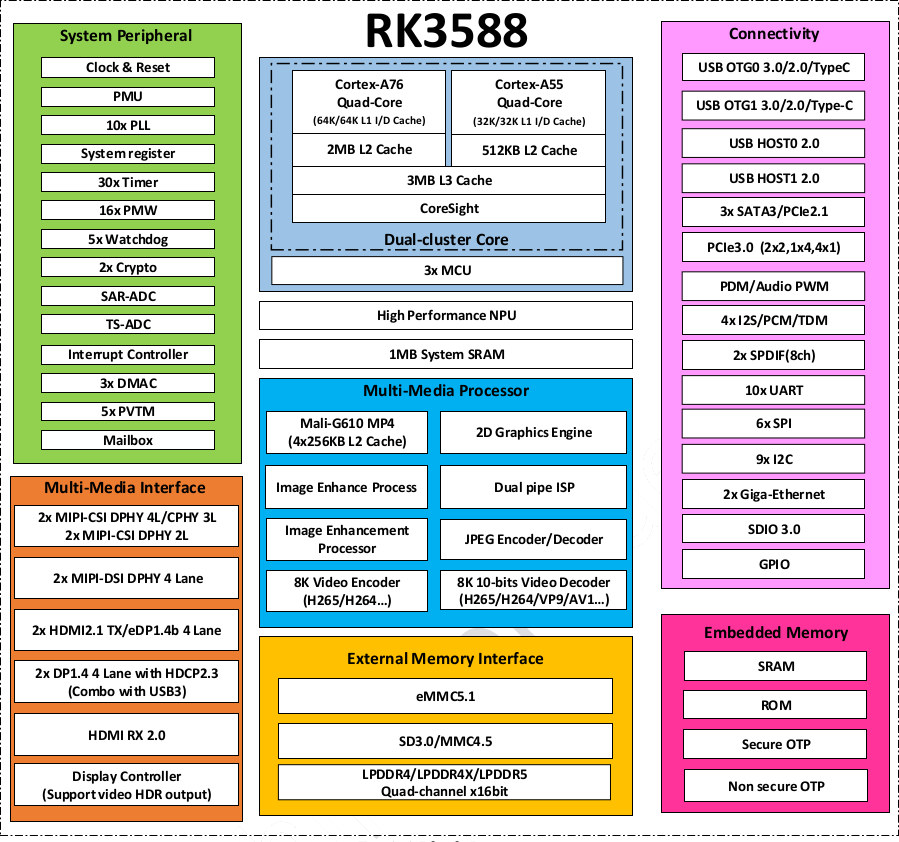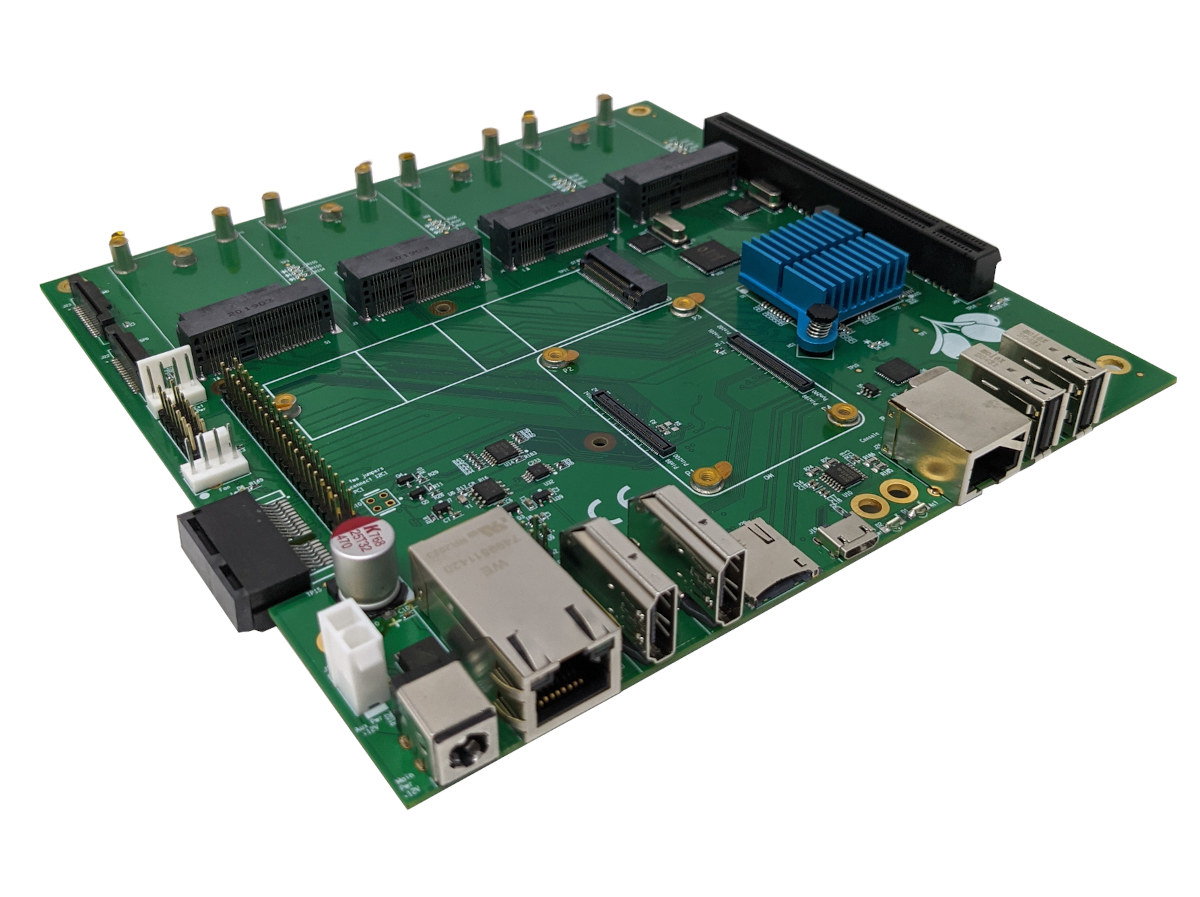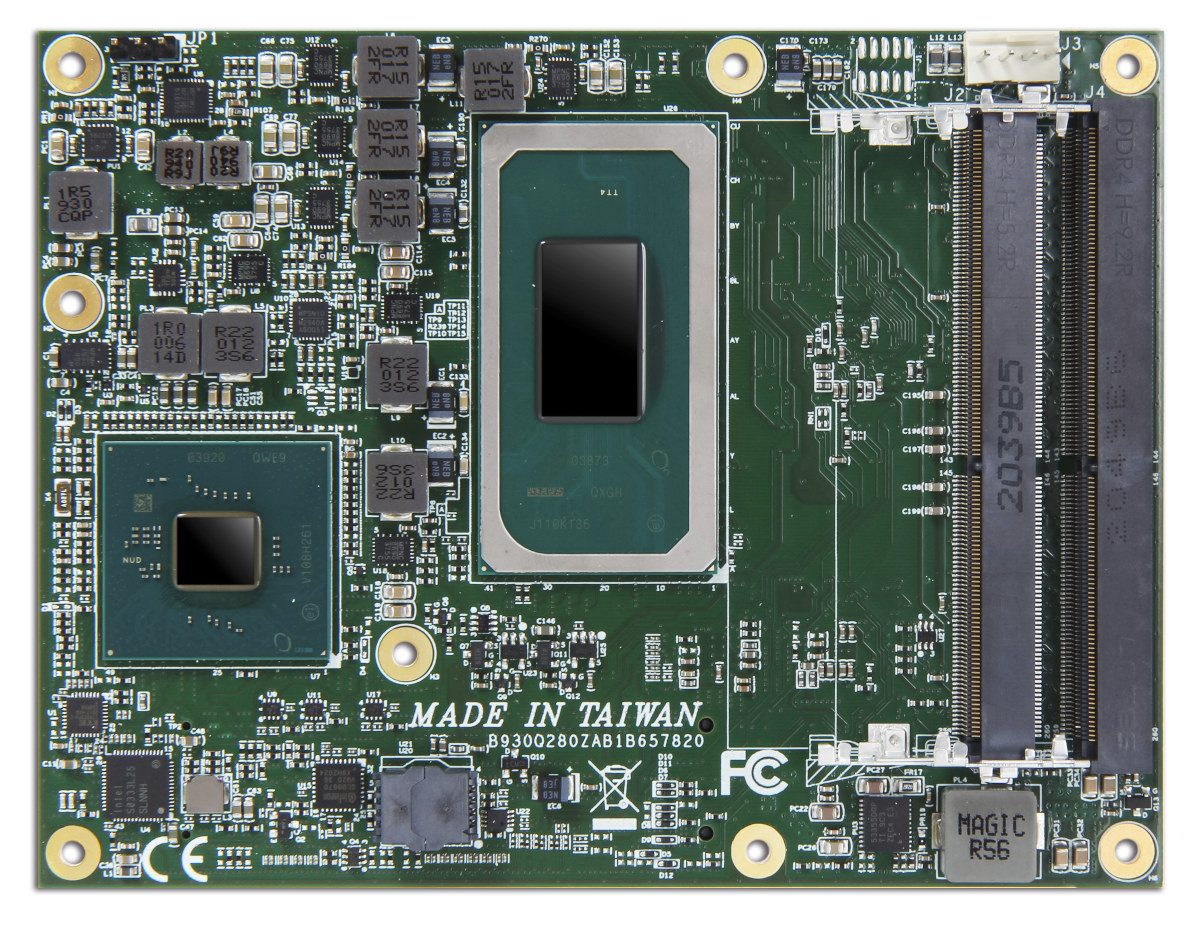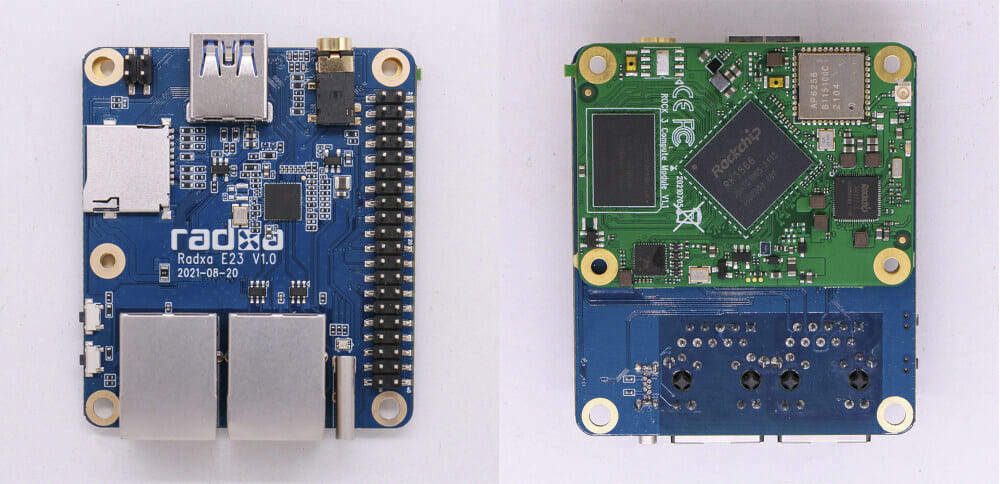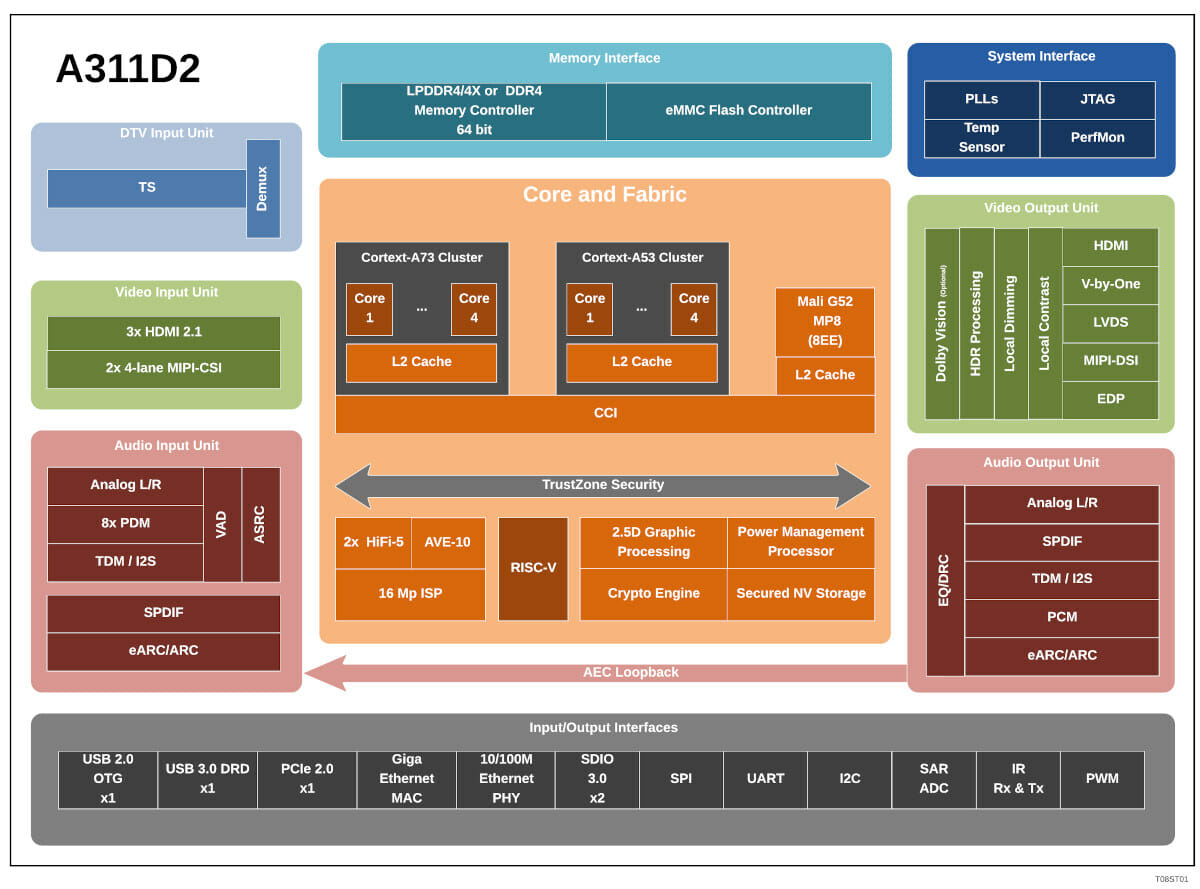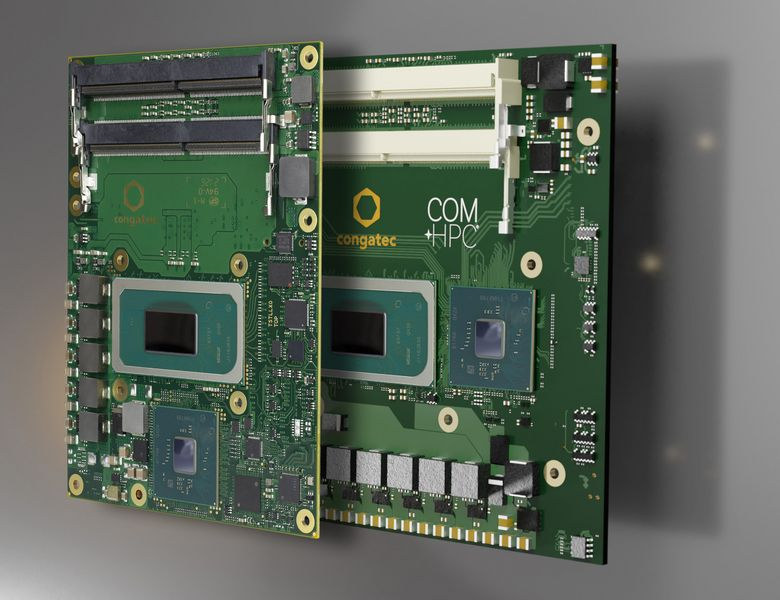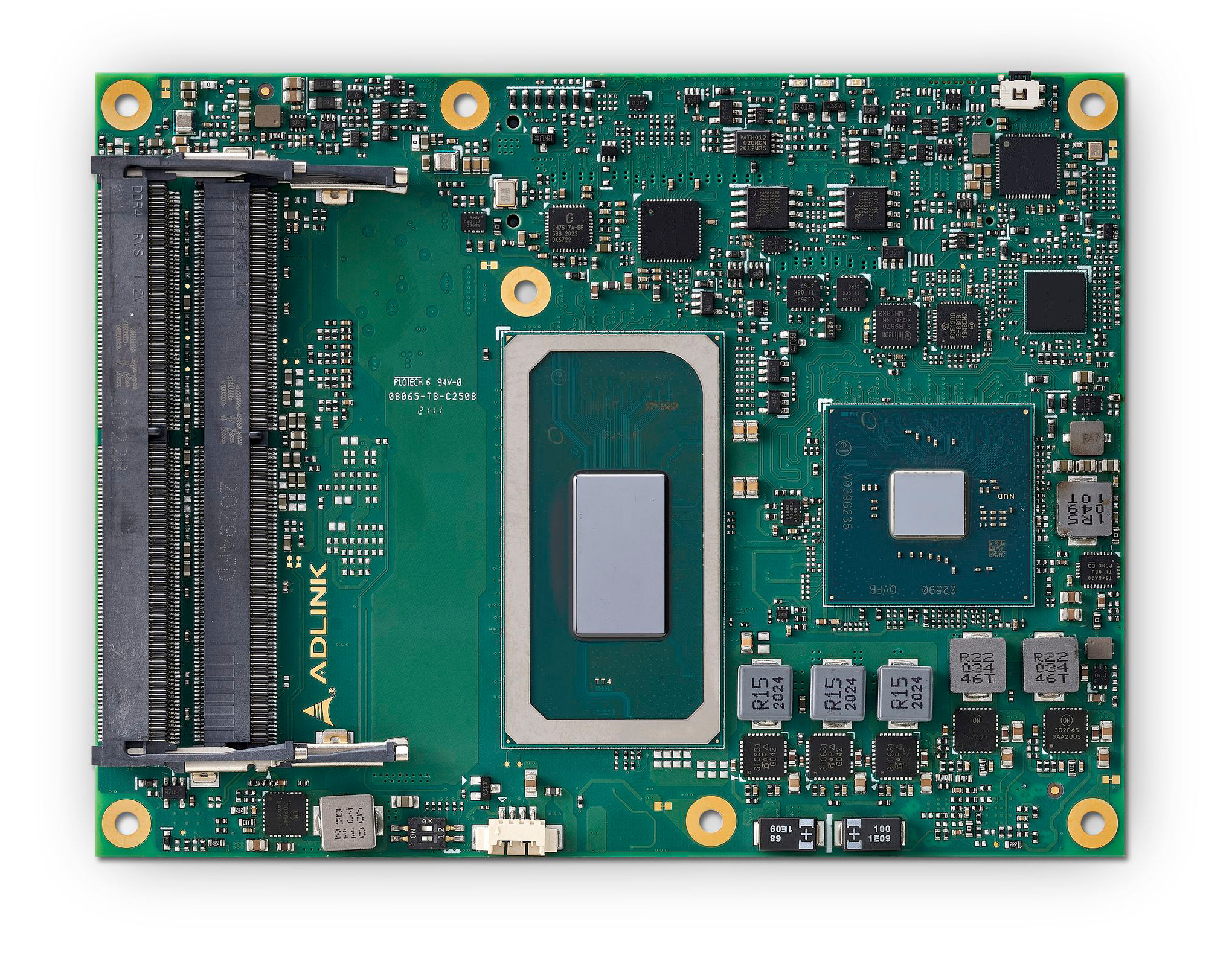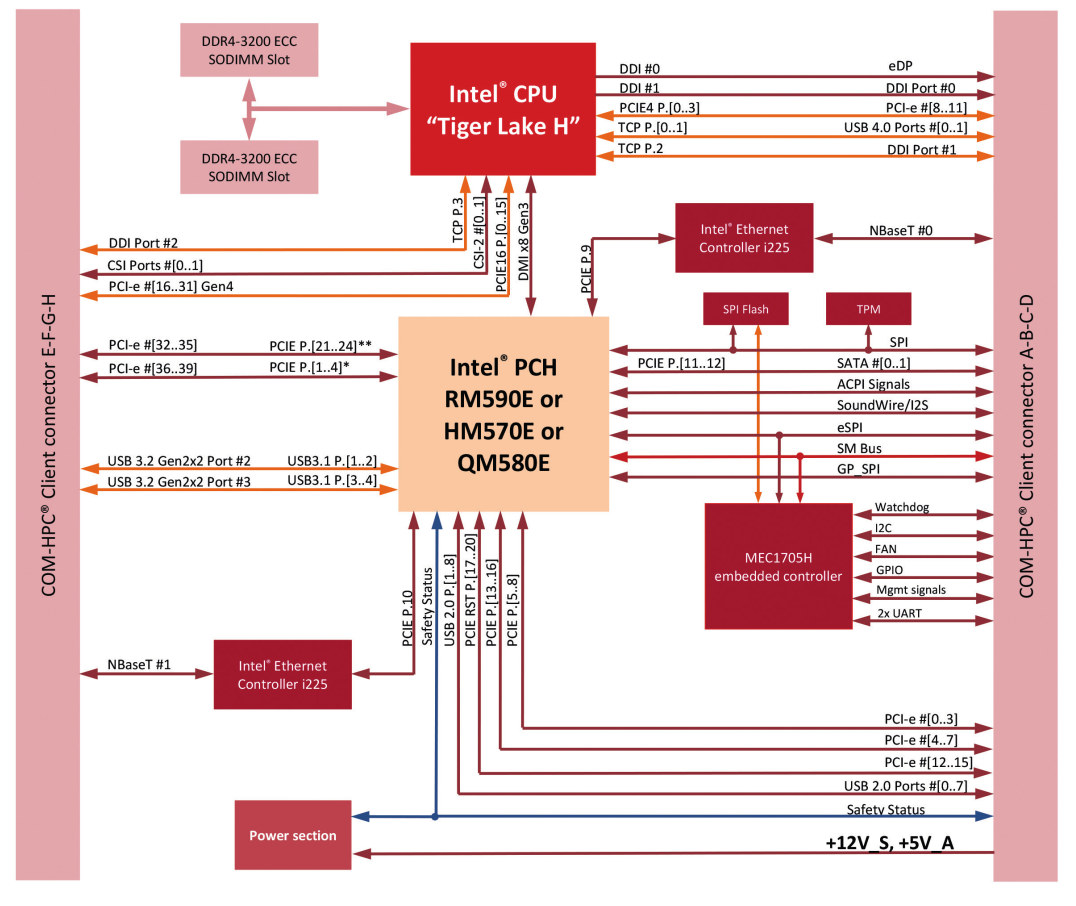We had most Rockchip RK3588 specifications so far for the long-awaited Cortex-A76/Cortex-A55 processor, but at today’s Rockchip Developer Conference 2021, more information surfaces with impressive CPU and GPU benchmarks, and the Rockchip RK3588 datasheet has just dropped from the sky directly into my laptop, as such document usually does. At least two single board computers are expected to soon follow from Radxa and Pine64. Rockchip RK3588 datasheet Since we have the datasheet, we can confirm some of the specifications of RK3588, and get additional details: CPU – 4x Cortex-A76 @ up to 2.4/2.6 GHz and 4x Cortex-A55 cores @ 1.8 GHz in dynamIQ configuration GPU Arm Mali-G610 MP4 “Odin” GPU with support for OpenGLES 1.1, 2.0, and 3.2, OpenCL up to 2.2 and Vulkan1.2 2D graphics engine up to 8192×8192 source, 4096×4096 destination AI Accelerator – 6 TOPS NPU 3.0 (Neural Processing Unit) VPU Video decoding 8Kp60 H.265, VP9, AVS2, […]
Seaberry Mini-ITX carrier board for Raspberry Pi CM4 exposes 11 PCIe slots and sockets
The Raspberry Pi CM4 may only have a one PCIe x1 Gen 2 interface, but this has not stopped ALFTEL from designing Seaberry, a mini-ITX carrier board for the Raspberry Pi Compute Module 4 with eleven slots and sockets making use of the single 5 Gbps PCIe Gen 2 interface. The board also offers two SATA ports, one Gigabit Ethernet port, one RJ45 console port, two HDMI ports, a micro SD card slot, two USB 2.0 ports, as well as the usual 40-pin GPIO expansion header, besides the PCIe x16 slot, a PCIe x1 side slot, and M.2 and mPCIe sockets. Seaberry carrier board specifications: Compatible systems-on-module Raspberry Pi CM4 module (Regular or Lite) Radxa CM3 Pine64 SoQuartz Storage – 1x MicroSD card for Raspberry Pi CM4 Lite, 1x M.2 socket for NVMe SSD (See PCIe expansion section) Video Output – 2x HDMI output ports, 1x MIPI DSI connector Camera […]
Portwell COM Express Tiger Lake-H module supports 2.5GbE, PCIe Gen 4, 8K, up to 64GB DDR4
Portwell PCOM-B657VGL joins other COM Express and COM HPC modules based on Intel Tiger Lake-H Xeon, Core, and Celeron embeddded processors such as ADLINK Express-TL and Congatec conga-HPC/cTLH. Just like its competitors, the Portwell COM Express Type 6 Basic module offers 8K video output, PCIe x16 Gen 4, up to 64GB DDR4, USB 3.2 Gen 2, and 2.5GbE networking for a wide range of higher-end embedded applications such as industrial automation, medical equipment, graphics-intensive applications, and artificial intelligence. Portwell PCOM-B657VGL specifications: SoC (one or the other) General Embedded Intel Celeron 6600HE dual-core processor @ 2.6GHz with 8MB L3 Cache, 16EU Intel UHD graphics, 35W TDP Intel Core i3-11100HE processor with 4 cores / 8 threads @ 2.4GHz (up to 4.4GHz in Turbo Boost) with 8MB L3 Cache, 16EU Intel UHD graphics, 45/35W cTDP Intel Core i5-11500HE processor with 6 cores / 12 threads @ 2.6GHz (up to 4.1GHz in Turbo […]
Radxa CM3 – A drop-in Raspberry Pi CM4 alternative
Radxa CM3 is a system-on-module that offers an alternative to the Raspberry Pi CM4, with the same form factor allowing it to become a drop-in replacement, but switching from a Broadcom BCM2711 processor to a Rockchip RK3566 quad-core Cortex-A55 SoC. Radxa CM3 will work with existing carrier boards for the Raspberry Pi Compute Module 4, albeit some features such as dual HDMI are not available, instead, providing a single HDMI, but the module also offers extra features through an additional 100-pin board-to-board with interfaces such as SATA III and USB 3.0. Let’s compare Radxa CM3 specifications to the ones of Raspberry Pi CM4. Comparing Broadcom BCM2711 quad-core processor and Rockchip RK3566, as the Cortex-A72 may still be faster on some workloads despite the lower frequency, and some other workloads may be dramatically faster on RK3566, for example for those using Armv8 Crypto extensions missing on all Raspberry Pi, which we […]
Amlogic A311D2 octa-core Arm processor supports up to 16GB RAM
Amlogic A311D2 octa-core processor is the successor to Amlogic A311D hexa-core SoC with four Cortex-A73 cores, four Cortex-A53 cores, a more powerful Mali-G52 MP8 (8EE) GPU, support for eDP and LVDS video interface, 8Kp24 AV1 video decoding, and support for a whopping 16GB LPDDR4/X memory. But it’s not all! The chip also includes supports for three HDMI 2.1 inputs up to 4Kp60, a 16MP ISP, 4K video encoding, and the more powerful GPU and higher memory bandwidth enable 4K user interfaces which were not feasible on most other Arm hardware barring the NVIDIA Shield. Comparison of Amlogic A311D2 and A311D specifications. * Amlogic A311D multiplexed PCIe and USB 3.0 interfaces means two configurations are possible: 1x USB 2.0 Host + 1 PCIe, OR 1x USB3.0 (No PCIe), but Amlogic A311D2 PCIe and USB 3.0 interfaces are independent, so we are not losing USB 3.0 when using PCIe (5 Gbps). The […]
Congatec COM-HPC & COM Express Xeon modules target high-end IoT gateways, medical edge applications
Yesterday, we wrote about ADLink Express-TL COM Express Basic Size Type 6 module powered by the latest Intel Tiger Lake-H Xeon, Core, and Celeron processors designed for high-end industrial & embedded systems. But as one would expect more such modules are coming to market, and Congatec announced both COM-HPC and COM Express CPU modules based on Intel Tiger Lake-H processors with target applications include high-end IoT gateways and medical edge applications. Let’s check out both conga-HPC/cTLH COM-HPC Client Size B modules (120mm x 120mm), as well as the conga-TS570 COM Express Basic Type 6 modules (125mm x 95mm). conga-HPC/cTLH COM-HPC module Key features and specifications: SoC – Choice of ten Intel Xeon, Core i3/i5i/7, or Celeron 6600HE processors with Intel Xe Gen12 graphics part of Tiger Lake-H family System Memory – Up to 4 SO-DIMM sockets for DDR4 ECC memory modules up to 32 GB each (128 GB total) with […]
Express-TL Tiger Lake-H COM Express module offers 8K video, PCIe Gen4 x16 connectivity
We just noticed some Intel Tiger Lake-H Xeon/Core/Celeron processors for embedded systems last week, and at the time it was not clear when they’d be announced and/or become available. It turns out it did not take long, as ADLINK has just unveiled their TL-Express COM Express Basic Size Type 6 module with the new processors. The new computer-on-module offers a more powerful alternative to the company’s cExpress-TL Tiger Lake UP3 COM Express Compact module, with up to 8 cores/16 threads, 128 GB memory, 8K video output, support for -40°C – 85°C industrial temperature range, and the company also claims it is the first COM Express module to support PCI Express Gen 4 x16, doubling the bandwidth of previous COM Express modules in the market. Express-TL COM Express Compact 6 CPU module specifications: Tiger Lake-H Embedded SoC (one or the other) Intel Celeron 6600HE dual-core processor @ 2.6GHz with 8MB L3 […]
25-45W Intel Tiger Lake-H Xeon, Core, and Celeron embedded processors coming soon
While doing some research, I noticed an Intel Core i7-11850HE “Tiger Lake-H” processor on the OpenVino Toolkit website. Parts that end with “E” are usually processors designed for the embedded market. I had never heard about the Tiger Lake-H embedded family, so I looked for “i7-11850HE” processor, and it’s not in Intel Ark, or much anywhere else except on a page in Google Cache, about a COM-HPC module “with the 11th Gen Intel® Xeon® W-11000E Series, Core™ vPro® and Celeron® processors (formerly Tiger Lake-H) for FuSa application”. There we have a list of Xeon, Core, and Celeron 11th generation processors that I don’t think have ever been announced: Intel Celeron 6600HE dual-core processor @ 2.6GHz with 8MB L3 Cache, 35W TDP Intel Core i3-11100HE processor with 4 cores / 8 threads @ 2.4GHz (up to 4.4GHz in Turbo Boost) with 8MB L3 Cache, 45/35W cTDP Intel Core vPRO i5-11500HE processor […]


